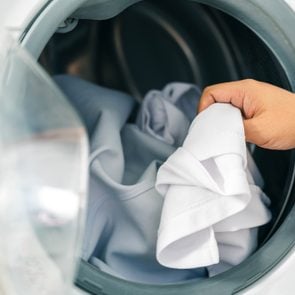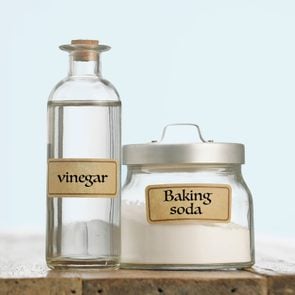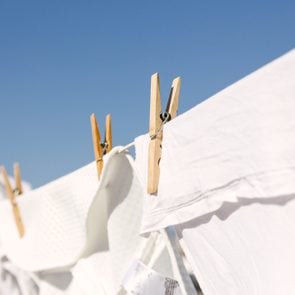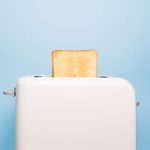How to Separate Laundry for the Cleanest, Brightest Clothes

So long, accidentally pink tees. Follow this simple method for how to separate laundry, and your clothes will come out of the wash the same color you put them in.
Our editors and experts handpick every product we feature. We may earn a commission from your purchases.
We’ve all experienced that laundry nightmare where we discover that our favorite white T-shirt is now pink, thanks to the red sock that got mixed in the wash. That’s why it’s so important to know how to separate laundry before tossing it in the machine.
“Sorting your laundry helps minimize abrasion and color transfer,” says Patric Richardson, star of HGTV’s The Laundry Guy and author of Laundry Love: Finding Joy in a Common Chore. “It helps to make clothes last longer. Putting all colors in together will shorten the life of your clothes, and they won’t stay looking fresh and new.”
Before sorting, read clothing labels to make sure you’re grouping together items that have the same needs. If you see the laundry symbols for “hand wash” or “dry clean only,” don’t put the item in the machine, even with the best laundry detergent. Although you can fix many laundry mistakes—here’s how to unshrink clothes and how to remove pilling on clothes—it’s better to avoid them in the first place. Keep reading to find out how to separate laundry for the best results.
How to separate laundry by color
All right: You’ve read your clothing labels, so you know how to wash silk, how to wash towels, and how to wash just about any other fabric that crosses your path. You’ve set aside anything that needs extra care—be sure you know how to hand-wash clothes—and are faced with a mountain of machine-washables. It’s time to sort.
Forget the lights and darks. Richardson has a unique and more effective system for how to separate laundry colors. He separates items into four color piles:
- White clothes
- Dark clothes
- Cool-colored clothes (blues, greens, purples)
- Warm-colored clothes (reds, yellows, browns, oranges)
“These groups are based on the weight of dyes, which are abrasive in the wash,” he explains. You don’t want your cool-colored clothes, which are heavier because they have more dye in them, to bleed on the lighter, warm-colored ones.
Can’t decide if that red-and-blue-striped shirt is red or blue? “The real trick to sorting is to trust your best judgment,” says Richardson. “Look at it, and instinctively you will know. Don’t overthink it.”
Bonus: We’ve got the perfect tool to help you with this task—take a look at this lights and darks laundry hamper.
How to group laundry
Some people like to separate their laundry by category—say, sheets, towels, denim, and delicate clothes—into hampers. Others sort by the amount of dirt and grime. And many make another pile for clothes they plan to dry clean at home.
According to Richardson, this is unnecessary for most items (more on that below). “I do not sort any laundry based on the specific item, and I put delicate clothes in mesh bags in with their respective color category,” he says. “I even toss my black satin sheets in with my black jeans.”
Aside from the extra time it takes, there’s no downside to separating laundry by fabric type. But heed this laundry day tip: Further separate each clothing category into the four color groups, Richardson says.
How to separate laundry by fabric type
The only exception to sorting by color rather than fabric type, according to Richardson, is activewear. This includes items made of spandex, polypropylene, and other high-tech fabrics typically found in workout wear. Because these fabrics are made to absorb sweat and dry quickly, they tend to hold in oil and bacteria and require an enzyme-powered detergent to wash them out. That means they should go in their own load. Consider your exercise clothes a separate fifth pile.
Here’s where reading clothes labels comes in handy again. They’ll tell you which fabrics make up a clothing item so you can launder the right way. “Reading labels allows you to know the fabric content in case you need to use a special cleaner,” says Richardson. “Once you understand the nature of fabrics, you can do laundry freely.”
From there, it’s just a matter of choosing your tools, whether that’s the best-smelling laundry detergent, safest laundry detergent, or the best dryer sheets.
How to wash your separated laundry
Richardson recommends waiting to do laundry until you have a full load—or at least enough items (five or six) for a small load. This keeps the clothes from tumbling too much and doesn’t waste water or electricity.
Right about now, you’re probably wondering what temperature to wash clothes. You may be surprised to learn that Richardson doesn’t buy into the idea of washing white clothes in hot water and dark clothes in cold. He’s adamant that the water temperature and washing cycle should remain standard, no matter which kind of laundry you’re doing. “It should always be warm water, cold rinse, express cycle,” he says. “No variations.”
Richardson acknowledges that his way of sorting is not traditional, but it’s faster and better for your clothes. As he explains in his book, new washing machine technology and colorfast dyes have changed the way we do laundry. “We continued sorting our clothes just like our parents and grandparents did back in the day, into whites, lights, and darks,” he says. “Until now.”
Source:
- Patric Richardson, expert at The Laundry Evangelist, star of HGTV’s The Laundry Guy, and author of Laundry Love: Finding Joy in a Common Chore







